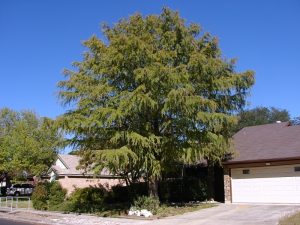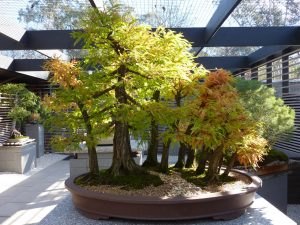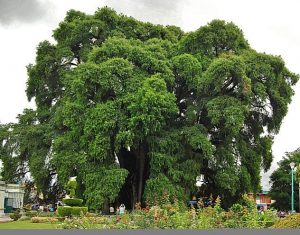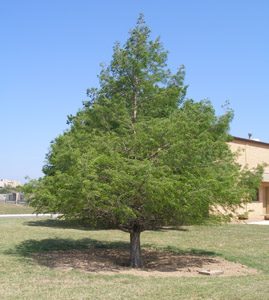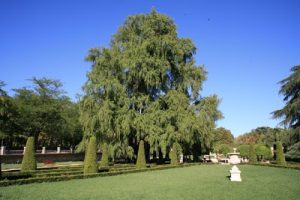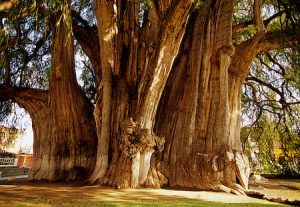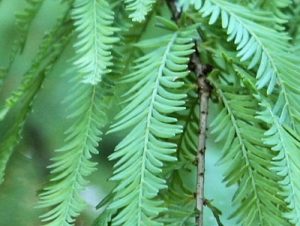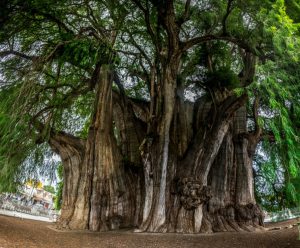Montezuma Cypress
The Montezuma cypress is a deciduous, coniferous tree found from Central America to the Southern parts of North America where it generally grows next to water bodies. Known to develop huge trunks, the Montezuma cypress is a fairly hardy plant not affected by common diseases. It’s a remarkable tree with both ecological importance and deep cultural ties.
Unique Features of the Montezuma Cypress:
1. Massive Size and Longevity:
One of the most distinctive features of the Montezuma Cypress is its incredible size. This tree can grow up to 40 meters (130 feet) tall, with some specimens having trunks that measure over 5 meters (16 feet) in diameter. The Montezuma Cypress is known for its longevity, with some trees living for over a thousand years, making it a symbol of resilience and endurance in the natural world.
2. Unique Root System:
The Montezuma Cypress has a unique root system that includes “knees” (vertical protrusions from the roots) which help stabilize the tree in wetland environments. These structures are believed to aid in oxygen exchange in waterlogged soils. The tree is typically found growing near rivers, lakes, and wetlands, which provide the right moisture conditions for its growth.
3. Distinctive Bark and Foliage:
The tree has a smooth, grayish bark that peels off in strips, revealing a lighter, almost silvery wood beneath. Its evergreen, feathery foliage is dark green in summer, turning golden-brown in the fall before dropping in winter, leaving a bare skeleton that still holds its striking presence. This unique leaf structure helps the tree survive the varying climate conditions in its native habitat.
4. Pollen and Seed Production:
The Montezuma Cypress produces small, cone-like structures that release pollen in the spring. These cones can produce hundreds of seeds that are carried by wind and water, aiding in the natural spread of the species. The tree’s ability to reproduce in different environments, including both wetland and dry areas, makes it highly adaptable.
Cultural Significance of the Montezuma Cypress:
1. Sacred Tree in Mexican Culture:
The Montezuma Cypress holds profound cultural and spiritual significance in Mexican traditions. It is often referred to as “Ahuehuete” in Mexico, which means “old man of the water,” symbolizing both wisdom and endurance. The tree has been a symbol of life and longevity in indigenous cultures for centuries. It is closely associated with the ancient Aztec civilization and is often regarded as a sacred tree, linked to ceremonies and spiritual beliefs.
2. Historical Ties to Indigenous Peoples:
The Montezuma Cypress has long been a part of indigenous life in Mexico. The Aztecs believed the tree had special powers and used its wood to create ceremonial objects. The tree was also featured in their religious practices, where it was seen as a bridge between the human and divine worlds. Its presence in ancient civilizations adds a rich layer to its cultural significance.
3. Symbol of National Identity:
The Montezuma Cypress is one of Mexico’s national symbols, representing the country’s resilience and natural beauty. The famous Árbol de Tule in Oaxaca, a Montezuma Cypress, is among the oldest and largest trees in the world. This tree has become a symbol of Mexican heritage and is a major tourist attraction. Its inclusion in national and regional emblems, as well as its presence in art and literature, solidifies its importance in Mexican culture.
4. Use in Traditional Medicine:
In traditional Mexican medicine, various parts of the Montezuma Cypress have been used for their purported healing properties. The leaves and bark are believed to have medicinal benefits, including anti-inflammatory and antiseptic properties. While scientific studies are still exploring the full extent of its medicinal uses, the tree continues to be an important part of herbal remedies in local communities.
5. Environmental and Economic Value:
The Montezuma Cypress has also been important for its economic value. Its wood is highly prized for its durability and resistance to decay, making it useful in furniture-making and construction, especially in areas with high humidity. The tree’s ability to thrive in wetland areas has made it a vital species in maintaining these ecosystems, where its dense foliage helps reduce soil erosion and supports local biodiversity.
Scientific Classification
| Kingdom | Plantae |
| Division | Pinophyta |
| Class | Pinopsida |
| Order | Pinales |
| Family | Cupressaceae |
| Genus | Taxodium |
| Scientific Name | Taxodium mucronatum |
Quick Information
| Also Known As | Montezuma bald cypress, Mexican Cypress; sabino, ahuehuete, ciprés, pénjamu, Ciprés de los Panatanos [Spanish] |
| Similar To | Bald cypress, Pond cypress |
| Size | 130ft (40m) tall; trunk diameter of 3.3-9.9ft (1-3.1m) |
| Leaves (Needles) | Arranged spirally, twisted at the base; 0.39-0.79in (1-2cm) long, 0.039-0.079in (1-2mm) broad |
| Flowers | Inconspicuous |
| Fruits (Cones) | Ovoid; female cones are dry and hard, measuring 1-3 inches in length |
| Tree Type | Evergreen or Semi-evergreen |
| Distribution | From Southern Texas in the US through Mexico down to the Northern part of Guatemala |
| Hardiness Zone | 6-10 |
| Lifespan | Long-lived |
| Growth Rate | Fast |
| Growing Condition | Summer Conditions: Dry summers with constant water requirementSoil: Clay loam, sandy loam, medium loam, sandy, clay; wet and moist Light Requirement: Part shade Water Requirement: High |
| Diseases and Pests | None |
| Flowering Season | Spring |
| Seed Production | Seeds mature in October |
| Seedling Development | Seeds germinate quicker with ample moisture, less so during drier months |
| Propagation | With seeds and cutting |
| Wildlife Value | Nesting site for many animal species, seeds are devoured by many small animals, especially rabbits |
| Cultivars | Weeper Montezuma cypress |
| Uses | As an ornamental or as a shade tree; wood used to make furniture and house beams; the Aztecs used its resin to treat ulcer, gout, and toothache |
| IUCN Conservation Status | Least Concern |
Interesting Facts
- The ‘El Árbol del Tule’ Montezuma cypress in Oaxaca state of Mexico is believed to be between 1,433-1,600 years. It has the thickest tree trunk in the world.
- The Montezuma cypress is the national tree of Mexico.
- The weeping form of Montezuma cypress was introduced by Dan Hosage in the year 1992.
References:
- https://en.wikipedia.org/wiki/Taxodium_mucronatum
- https://www.conifers.org/cu/Taxodium_mucronatum.php
- http://texastreeid.tamu.edu/content/TreeDetails/?id=122
- https://www.onlineplantguide.com/Plant-Details/2615/
- https://www.iucnredlist.org/species/34029/2840943
Published on September 5th 2016 by Sudipto Chakrabarti under Cypress.
Article was last reviewed on 5th December 2024.


